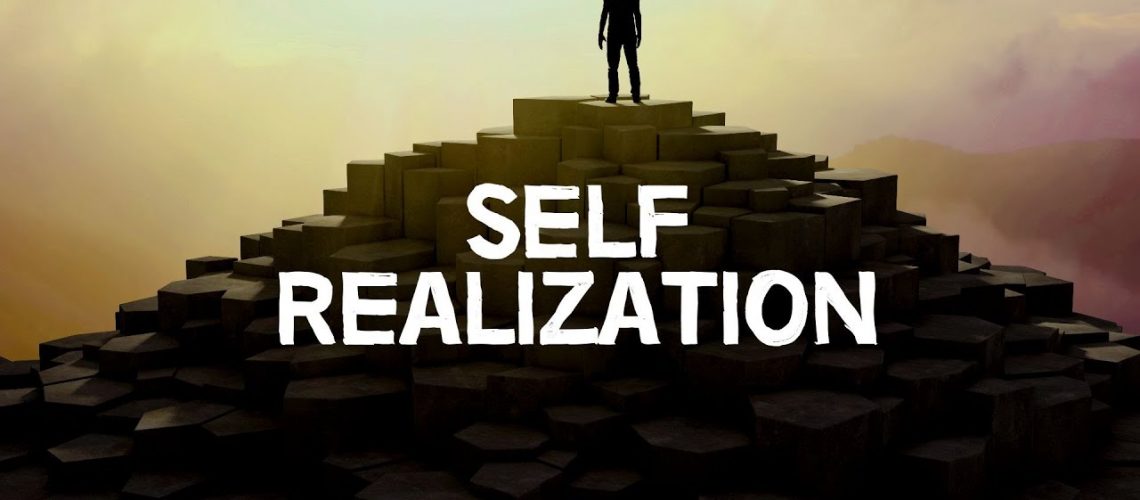How does self-realization work? And what holds us back from living up to our full potential?
Video by Einzelgänger
Key Takeaways
The problem is that these are just temporary fixes, that mute the symptoms to a certain degree, that, more often than not, return in full force.
Karen Horney was a Neo Freudian psychoanalyst, who saw ‘neurosis’ as the main obstacle in the process of self-realization.
In order to live up to our full potential, we must overcome our neurosis and, therefore, face our existing mental conflicts that block us from genuine personal development.
Neurosis can be summarized as a structurally ineffective way to handle life’s problems.
Horney saw it as a distorted way of looking at the world and oneself, which leads to a set of compulsive needs that prevent the person from experiencing the world in a genuine way.
Swiss psychiatrist Carl Jung also held self realization in high regard, believing that this process, also called individuation, is the main goal in life.
So, before we move on to the methods to turn neurosis into self realization, let’s take a look at the following question: how does one become neurotic?
- For example: as children, we need a certain amount of affection, security, love, et cetera, to develop into “healthy” individuals that don’t exhibit an extreme reliance on coping mechanisms.
Negative Coping Mechanisms
In our lifetime we develop several coping mechanisms when it comes to dealing with people. These mechanisms can be subdivided into three categories according to Horney, also known as the three neurotic trends:
1. Moving towards people
2. Moving against people
3. Moving away from people
Problems arise when someone overuses these coping strategies, which indicates that the person is neurotic. Repeating the same unproductive coping strategies over and over again leads to a vicious cycle.
In the book Self-Analysis (1942), Horney identified a series of so-called neurotic needs, that all belong in one of the three categories of coping mechanisms.
1. Need For Affection
One of these neurotic needs is ‘the need for affection and approval’, which belongs in the category ‘moving towards people’.
There’s nothing wrong with needing affection and approval to some degree, but the neurotic craves it in a self destructive way.
Individuals with this need are extremely sensitive to criticism and rejection, and make ‘people pleasing’ and ‘being liked’ the center of their world. Of course, this leaves them open to exploitation and abuse.
The root of this need is anxiety; the fear of being excluded or being alone.
2. Need For Power
‘The neurotic need for power’ belongs in the category ‘moving against people’.
Power seekers are moving against others in order to gain control.
- They often need to complete, exploit, and defeat, in order to change the environment to their favor.
- They very much fear things like helplessness, incompetence, worthlessness, violation, and this fear enforces their need for control, self-protection, and achievement.
3. Need for Self-Sufficiency and Independence
Individuals with this need tend to distance themselves from other people, as a way to decrease the chances of being hurt. These are the typical “loner” types.
According to Horney, the reason why neurotic people are stuck when it comes to self-realization is that they have a mental block caused by a need for perfection.
Realistic Self vs. Idealistic Self
1. The perfectionist that moves TOWARDS people
The perfectionist that moves towards people, will behave as overly compliant and as a people pleaser, in return for being liked.
2. The perfectionist that moves AGAINST people
They want to be at the top, to be admired, and to be the best all the time. But glory is just temporary. Even if we reach the top, it’s just a matter of time before we get replaced.
3. The perfectionist that moves AWAY from people
The perfectionist that moves away from people, wants to be wise and self sufficient, in ways that are almost superhuman.
This is an impossible goal to reach because, in many ways, we are dependent on and intertwined with the world around us.
Neurotics experience a big gap between their real self and their ideal self, which is almost impossible to bridge.
In order to escape the vicious cycle, truthfulness about one’s potential is essential.
“Man, by his very nature and of his own accord, strives toward self-realization, and that his set of values evolves from such striving. Apparently, he cannot, for example, develop his full human potentialities unless he is truthful to himself; unless he is active and productive; unless he relates himself to others in the spirit of mutuality. Apparently he cannot grow if he indulges in a “dark idolatry of self” and consistently attributes all his own shortcomings to the deficiencies of others. He can grow, in the true sense, only if he assumes responsibility for himself.”
Practical Steps Towards Self-Realization
1. Discovering Who You Are
“If a person has had sufficient courage to discover an unpleasant truth about himself, one may safely trust his courage to be strong enough to carry him through.”
Luckily there are many ways to gain self-knowledge, and we could work together with a therapist, or engage in self-therapy to achieve this.
- A Carl Jung based personality test named the ‘Big Five’ can give us insight in traits like neuroticism and introversion.
- A Jungian method named shadow work is aimed at discovering unwanted characteristics that linger in the unconscious.
- There’s also meditation, and journaling, that can help us to become more aware of our bodily sensations and thought processes.
- Another method used in modern psychology is the Enneagram of Personality, which is a ninefold system of different personalities along with their weaknesses, basic emotions, ego fixations, et cetera.
“Briefly, he must overcome all those needs, drives, or attitudes which obstruct his growth: only when he begins to relinquish his illusions about himself and his illusionary goals has he a chance to find his real potentialities and to develop them. Only to the extent to which he gives up his false pride can he become less hostile to himself and evolve a solid self-confidence. Only as his shoulds lose their coercive power can he discover his real feelings, wishes, beliefs, and ideals. Only when he faces his existing conflicts has he the chance for a real integration – and so forth.”
2. Creating the Right Circumstances
According to the ancient Stoics, the end goal Eudaimonia – which means flourishing – is only achieved when we live in accordance with nature. With nature, they mean our own nature and the nature of the universe.
By gaining self-knowledge we learn about our individual nature, how this relates to the world, and what the ideal circumstances are in order for us to flourish.
- For example: an introverted and observer-type of personality can flourish in solitude, and an extrovert can flourish in more social settings.
- Another example are people that are high in openness and high in neuroticism, that will optimally realize their creativity when they increase their conscientiousness.
3. Aim For the Right Things
From a Taoist point of view, we may want to choose to swim along with the river stream, in other words, take the path of least resistance that fits our nature best.
This does not mean taking a path of mediocrity; it means that we excel in the traits we already possess.
However, oftentimes it is recommended to develop traits that we are not naturally inclined towards.
- People that are neurotically inclined to hide from others, may want to develop social skills.
- People that are inclined to exploit, and dominate others for their own gain, may want to develop compassion and humility.
There is no one way that suits everyone. Part of self-realization is forging our own unique path, and not walking existing ones.
“To find a mountain path all by oneself gives a greater feeling of strength than to take a path that is shown.”
We can choose a path of mediocrity and security, and proceed walking the same path over and over again, knowing that it won’t lead us anywhere.
This is the safe route, yes, but it will also lead to self-hatred in the end. Rightfully so, Carl Jung called this the road of death.
“There is no guarantee - not for a single moment - that we will not fall into error or stumble into deadly peril. We may think there is a sure road. But that would be the road of death. Then nothing happens any longer - at any rate, not the right things. Anyone who takes the sure road is as good as dead.”

